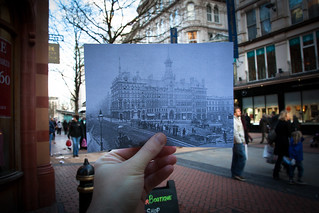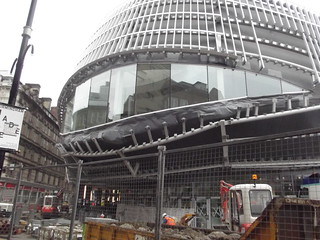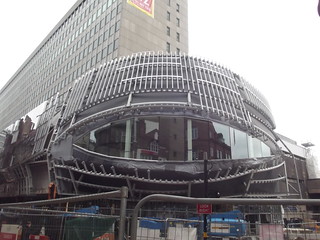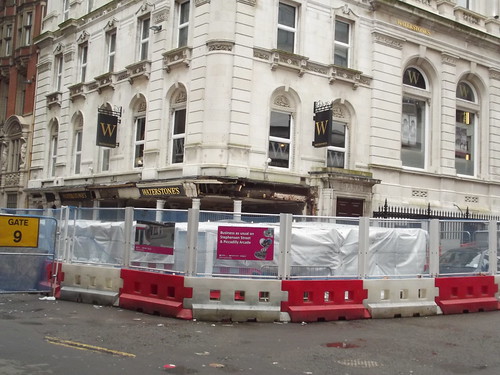Thanks Ell. Looks like your info on Queens Hotel shows it beat the Great Western Hotel at Snow Hill to the post. The GW hotel was opened in 1863. So maybe the statement of Queens Hotel being the only B'ham railway hotel at the time was true. This woud therefore place the original drawing/painting depicted on the postcard as between 1854 and 1863. Thanks! Viv.
-
Welcome to this forum . We are a worldwide group with a common interest in Birmingham and its history. While here, please follow a few simple rules. We ask that you respect other members, thank those who have helped you and please keep your contributions on-topic with the thread.
We do hope you enjoy your visit. BHF Admin Team
You are using an out of date browser. It may not display this or other websites correctly.
You should upgrade or use an alternative browser.
You should upgrade or use an alternative browser.
Stephenson Street
- Thread starter ragga
- Start date
jennyann
Gone but not forgotten. R.I.P.
Having worked at New Street Station for a couple of years in the later l950's, this post card portrays what I saw everyday when I went to work. Forays into the
Queen's Hotel were fascinating. I wasn't scared of "exploring" buildings even back then also the Event Hall in the Exchange Building when I was at school in Corporation Street age 12. As someone who left Birmingham in 1963 and have visited over the years several times, I was shocked at what I call a travesty...not so much the demolition of the Queen's Hotel, don't think Brum Corp bothered too much about restoration of buildings back then but what replaced the Exchange Building in Stephenson Place, the unimaginative entrance to New Street Station and the endless blank wall stretching along Stephenson Street where the Queen's Hotel stood.
Queen's Hotel were fascinating. I wasn't scared of "exploring" buildings even back then also the Event Hall in the Exchange Building when I was at school in Corporation Street age 12. As someone who left Birmingham in 1963 and have visited over the years several times, I was shocked at what I call a travesty...not so much the demolition of the Queen's Hotel, don't think Brum Corp bothered too much about restoration of buildings back then but what replaced the Exchange Building in Stephenson Place, the unimaginative entrance to New Street Station and the endless blank wall stretching along Stephenson Street where the Queen's Hotel stood.
Shortie
master brummie
Ellbrown - the hotel stretched a long way, from one side of what is now the ramp, right along to about Temple Street, but yes, where the shiny frontage is now. I know which I prefer, but then I am a dinosaur. The station and hotel may have been designed by E A Cowper, but the glass roof is attributed to John Henderson of Fox, Henderson and Co. This firm also built the Crystal Palace, again to John Henderston's calculations, but to Joseph Paxton's original design. There are other railway roofs attributed to Henderson, too. I have a whole load of information on this man, but it's not within my reach at the moment, being in the loft. Whether St Pancras was his, I cannot remember, but another London glass roof still there is his too. The main concourse of the station was wooden, and instead of whole walls shutting off views to the platforms, there were wooden advertising hoardings. Steps down to the platforms were also wooden, but they had iron treads and if I remember rightly, with a diamond pattern on. I can smell the station now, and hear the steps of the people along the wooden concourse - fabulous memories, but then I loved the railways.
Hi Jennyann. We must be on the same wavelength as I was just looking at a similar view but from the other side! My picture is later but I was trying to work out the name circling under the platform numbers, now you've given me the answer! Holbrooks.There's a lot of advertising even in these early days including a large sign for Rowton House. Thanks, a nice view. Viv.


According to the Warwickshire railways site, the Great western hotel was taken out of public use and used as offices from 1912, as it was not popular with passengers because of noise and smoke, so the statement about the queens being the only railway hotel was accurate in 1918.
Thanks Mike. That sorts that one out!
The Queens Hotel was what is now the building(s) on the left hand side of this photo of Stephenson Street. I don't remember anything but a sign saying 'Queen's Hotel', nothing about North Western Hotel at all.
Shortie. I'd always assumed Queens started out as the building to the left in the corner, near the old Exchange building on Stephenson Place. I too wonder when, or indeed if, the whole of the expanse along Stephenson St was ever formally named the 'Queens and North Western Hotel' i.e. was there just an amalgamation of the two distinct buildings? This sketch implies the whole building on Stephenson Street and the building in Stephenson Place were known as Queen's Hotel with a nodding acknowledgement to LMS. So maybe calling it Queen's and North Western Hotel on the postcard in post #18 was simply advertising to highlight the NWR train service. Viv.

Thanks Mike. Interesting it was known as Queens & NW Hotel for 45 years! I'll bet it was informally referred to as Queens. I think you can always rely on the Victorians to give you an all-embracing, comprehensive title for something, where one word would do! Viv.
ellbrown
ell brown on Flickr
A then and now from polyesterpowdercoated

View to Stevenson Street from New Street by polyesterpowdercoated, on Flickr

View to Stevenson Street from New Street by polyesterpowdercoated, on Flickr

Thanks Mike. I did wonder if it was underground as there aren't any windows. Just looks like light coming into the building from above. At first I thought it was something to do with the Exchange building. But if it's listed as near Navigation Street it can't be. Thanks for checking it out. Viv.
horsencart
master brummie
In the modern Stephenson Street there are two underground car lifts they are next door to Ian Allan book shop there are two lifts both lifts are big enough for a transit van to fit in a car will drive from the street level the lift will then go down one floor (a distance of about twenty five feet or more) the car will then be driven out of the other end of the lift into a basement floor it is a area and can hold about twenty car? or so, you may be about to see the lift entrance with google earth
I suspect that this may be the same area as the photo (till disproved by others)
it is known as Colanade Building failing that where the old Woolworth building was they had a an underground car park there and that could hold about twenty car there
UOTE=Vivienne14;489213]Thanks Mike. I did wonder if it was underground as there aren't any windows. Just looks like light coming into the building from above. At first I thought it was something to do with the Exchange building. But if it's listed as near Navigation Street it can't be. Thanks for checking it out. Viv.[/QUOTE]
I suspect that this may be the same area as the photo (till disproved by others)
it is known as Colanade Building failing that where the old Woolworth building was they had a an underground car park there and that could hold about twenty car there
UOTE=Vivienne14;489213]Thanks Mike. I did wonder if it was underground as there aren't any windows. Just looks like light coming into the building from above. At first I thought it was something to do with the Exchange building. But if it's listed as near Navigation Street it can't be. Thanks for checking it out. Viv.[/QUOTE]
Thanks Two. Surprised about that. I suppose they could be wheeled to nearby buildings then, but expect they were pretty heavy. Viv.
Lovely photo Bernie. You can just make out Woolworth's (rear) to the left. And what a big M & B sign into the Exchange building. Must have been a bar in there, or maybe it was for the function room. And a sweet little bubble car captured there too. Viv.













